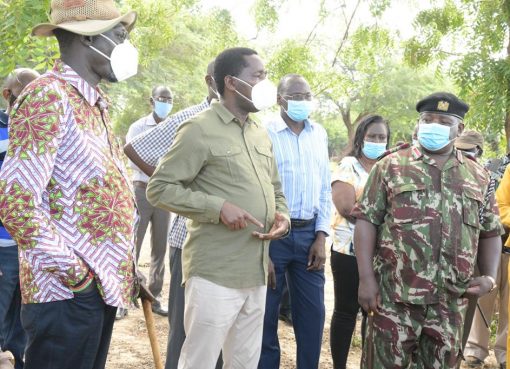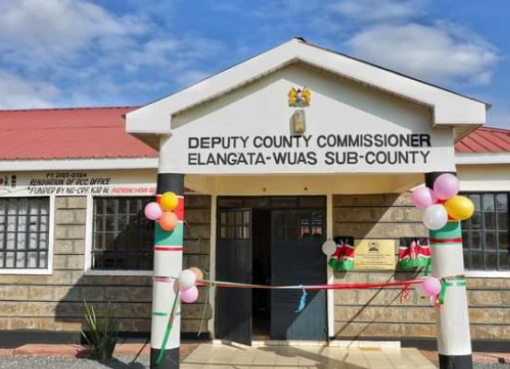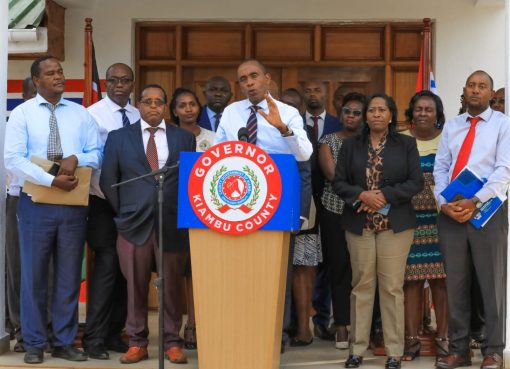There will be no turning back on the second phase of evictions, aimed at removing Maasai Mau Forest of over 10,000 illegal settlers, the Government has declared.
The Rift Valley Regional Commissioner (RC), George Natembeya said a multi sectoral team had already received a nod from Ministry of Environment and Forestry to erect an electric fence within the block and start reforestation programs within the coming few weeks.
The administrator who spoke after chairing a closed door meeting with a team tasked to oversee the evictions maintained that no Standard 8 and form four candidates will be affected as there were no public schools in the targeted block.
Top political leaders from the region have protested against the looming evictions, on grounds that if the exercise is allowed to proceed, some 8,000 school going children, including 1,000 candidates set to sit their national exams at the end of the year, will suffer.
Last week, the State dealt a blow to opponents of the second phase of evictions when it published in the dailies 1,274 title deeds in the Mau complex for cancellation.
In June last year, the Ministry of Lands moved to court seeking orders to nullify the titles which were “irregularly and unlawfully issued”. Prayers were granted two months ago with the court directing the ministry to publish the titles, their owners and acreage they acquired.
Natembeya said that the team will not be bothered with political noise stating that “We are not here to dance to political and individual whims”.
He maintained that there were no public schools in forests. He also put on notice illegal grazers and settlers within 21 other blocks in the Mau Complex as they would be targeted in the next phase of evictions.
“I challenge those with information on public schools within the forest to furnish us with any such institution’s registration number, the index numbers of candidates and details of teachers posted there by Teachers’ Service Commission,” he asserted.
The meeting to map out strategies on the second phase of evictions was attended by high ranking officials from the National Police Service, the Kenya Forest Service (KFS), National Security Intelligence Service (NSIS), the Kenya Wildlife Service (KWS), Ministry of Interior and Kenya Water Towers Agency (KWTA).
The phase one of the evictions that saw 10,000 illegal settlers evicted was centered in Reiya group ranch.
The second phase has Nkoben, Ilmotiok and Ololunga on the radar. The others are Enokishomi, Enoosokon, Nkaroni and Sisian.
He however said that though security personnel had been deployed on the ground, the evictions will be conducted in a humane manner.
The RC said the exercise was aimed at restoring the water tower which supports the lives of about 10 million people.
“The Mau forest debates that have been raging have no substance except heavy political undertones. We are not flouting any law here,” Natembeya said.
He asked politicians to keep off the exercise and maintained that the water tower is not about tribes and pledged that the restoration process would go on as planned by the relevant authorities.
During the first phase of the eviction in July 2018, about 7,700 people were evicted from the forest land which saw over 12,000 acres of the forest reclaimed.
The eviction birthed heightened rhetoric from leaders of the Maa and Kalenjin communities who preoccupied themselves in heated accusations and counteraccusations.
Maa leaders are favouring the evictions to go on while the Kalenjin leaders wanted it stopped terming it illegal and inhuman.
The Mau is the largest water tower in the country supporting millions of human life and wildlife in Kenya and beyond.
On Wednesday, the Kenya Water Towers Agency Acting Director General, Julius Tanui said his agency had received instructions to prepare to secure the complex.
“We have received instructions to wait. Our main work will be to secure and rehabilitate after evictions. That is where conservation begins,” he said.
On July 25, the Environment and Forestry Cabinet Secretary (CS), Keriako Tobiko vowed to ensure the evictions go on as planned, saying that no amount of intimidation would stop it.
“Water towers are our lungs and the rivers flowing are our bloodstream. Why would the environment become a political question? It does not know about tribes; the environment does not care,” he said.
In a document titled, ‘Kenya Water Towers Status Report 2018, the government noted that between 1990 and 2016, there was drastic change in the landscape of East Mau.
Within the gazetted forest zone, forestland decreased by about 40 per cent from 54,804 ha in 1990 to 21,740 ha in 2016. Trees were cut down to give way to grazing land, and cultivated crops.
“The threats are mainly caused by rapid population growth which intensifies the pressure on the limited water tower’s natural resources thereby accelerating their eventual degradation.
In addition, there is change in land use and land cover due to cutting of trees for firewood, charcoal, opening land for cultivation, occurrence of forest and bush fires and excision of gazetted forest to create human settlement” states the Kenya Water Towers Status Report 2018 report.
As a result of conversion of forest lands to open grasslands for cultivation the report notes that not only has the balanced nature of the ecosystem been upset but also many of the rivers from the Mau forest complex started to dry up as a result leading to a national outcry.
The tower forms the upper catchment for the main rivers in Rift Valley and Western Kenya that include Sondu, Mara, Ewaso Ngiro, Molo, Njoro, Nderit, Makalia and Naishi which feed Lake Victoria, Lake Baringo, Lake Nakuru and Lake Natron. Rivers such as Yala, Nyando Sondu and Nzoia also rise in the Mau.
By Anne Mwale




